My mom and I drove to downtown (and midtown, on the way there and back) Sacramento on January 15th to survey the bustling area for public art. We knew we’d have to plan around road work and the crazy traffic, including detours and a parking shortage. Therefore, I did some research beforehand to guarantee that I could take decently angled and focused photos of at least one site. I will indicate which photos I myself managed to take; all the other photos are sourced from * http://sacpedart.com *
Sacramento’s downtown art is situated around many important buildings, such as:
- In front of the Superior Court of California. In Greek mythology, Proteus is the “Old Man of the Sea” and a shapeshifter. Thus the adjective protean has positive connotations of flexibility, versatility and adaptability. The fountain’s dizzying, twisting forms also meld the water flowing around them. All who enter the courthouse are reminded and indirectly held to protean standards.
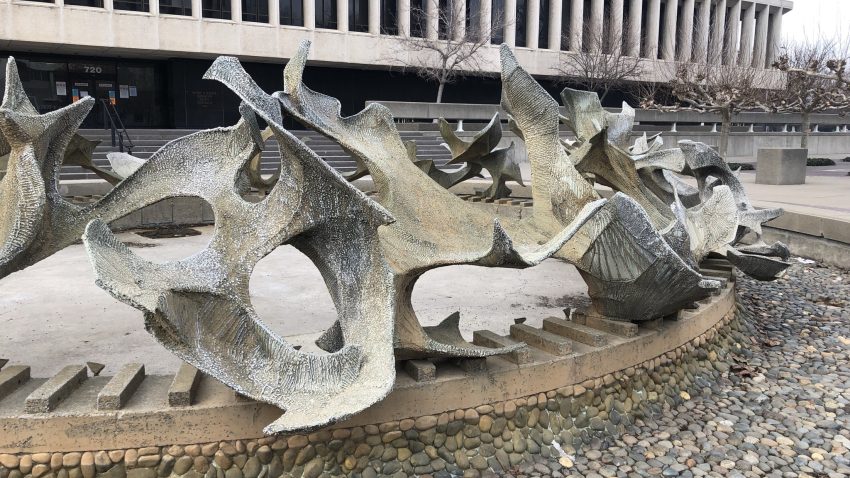
The Proteus Fountain *In-Person Photo!
- In a plaza outside the SAFE Credit Union Convention and Performing Arts Centers. The Blue Trees, by Konstantin Dimopoulos, use a water-based, non-toxic, biologically safe pigment to warn of global deforestation. Blue trees do not exist in the natural world, so the display creates an unforgettably surreal environment emphasizing the trees. Trees provide wood, fruit, habitats, carbon storage, and oxygen exchange. Sacramento is actually known as “The City of Trees” because of its very high plant biomass.
- In exactly the same plaza, I encountered the Time to Cast Away Stones Fountain, emblazoned with the engravings: “Where are we going?/ What have we wrought?/ How are we loving?/ What have we thought?” amidst rushing water and a chaotic jumble of body parts. The artist, Stephen Kaltenbach, enjoys working against trends in the art world, and seeks to increase access for the public instead of keeping art exclusive to institutions. When Kaltenbach’s father died, Kaltenbach eventually turned to Christianity; the fountain’s title might refer to Ecclesiastes 3:5., which advises to think through one’s own actions in every context (“A time to cast away stones, and a time to gather stones together; a time to embrace, and a time to refrain from embracing”).
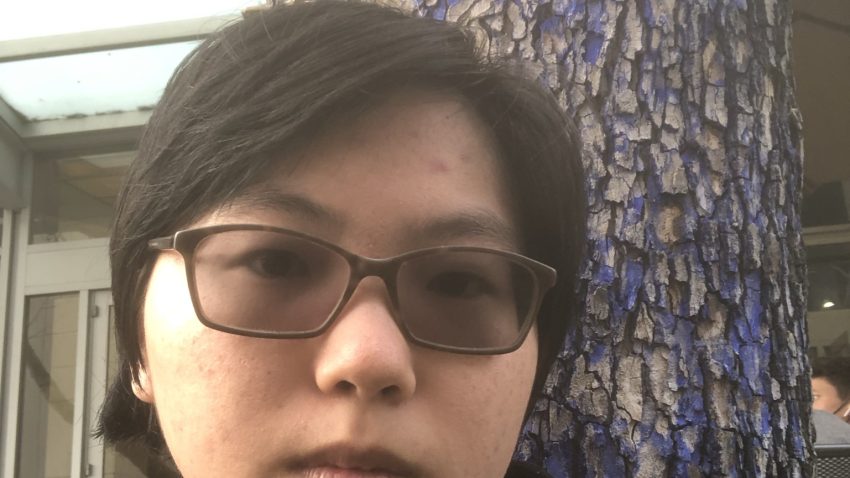
The paint is faded, but The Blue Trees are still striking! *In-Person Photo!
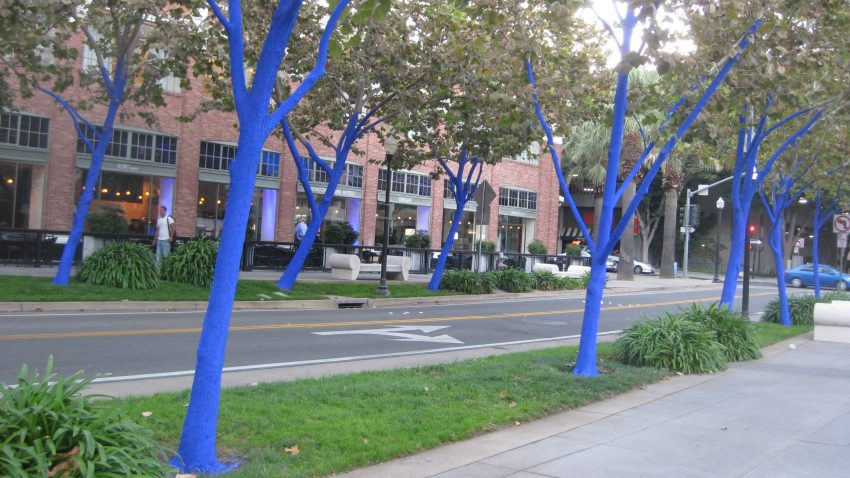
The Blue Trees in their full past glory.
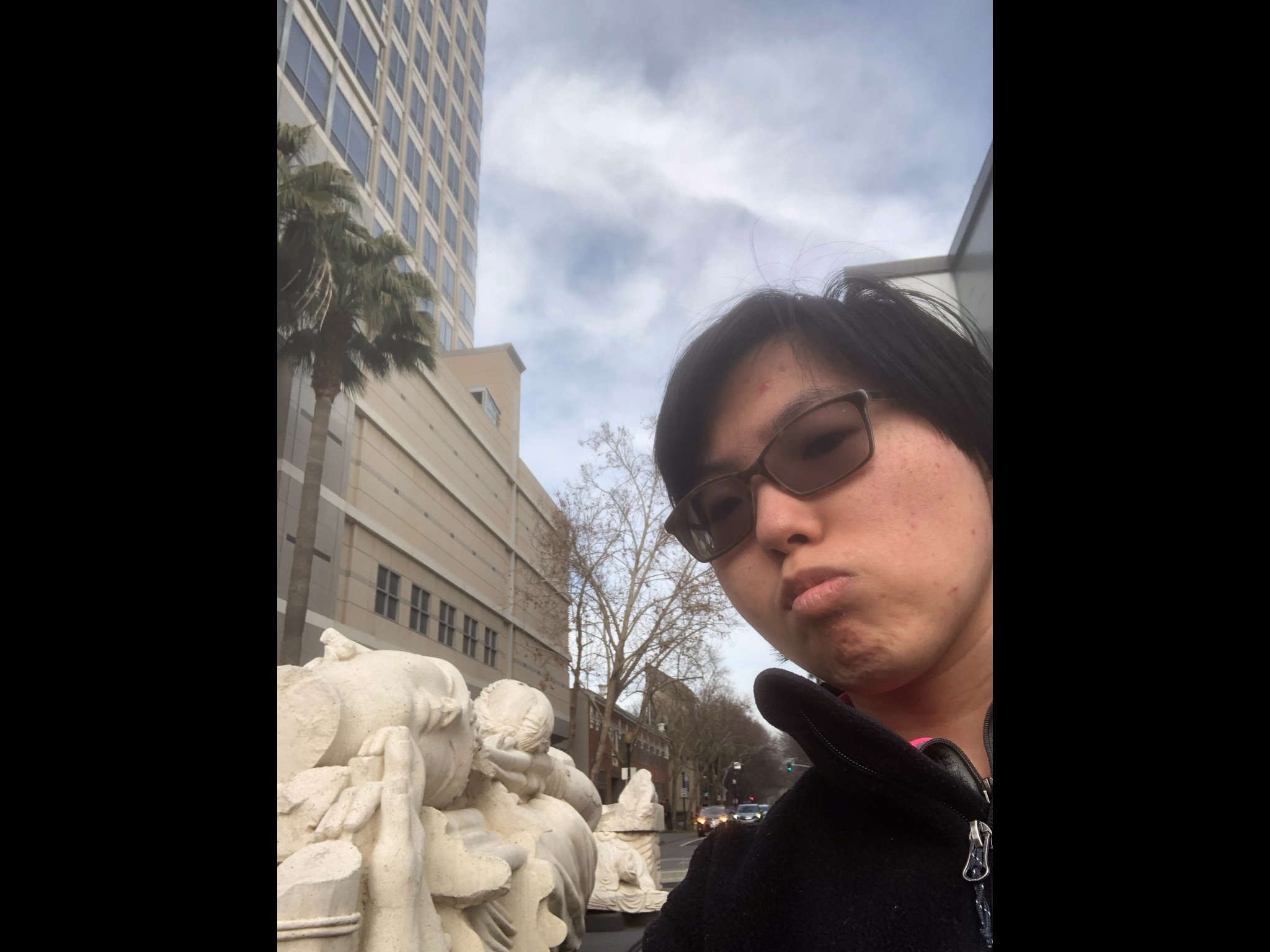
The accidental concentration duck-face and poor cropping explain why I don’t take many selfies. *In-Person Photo!
- In the park outside the Capitol building (the California Vietnam Veterans Memorial). Black granite panels in the outer ring are engraved with the names of the 5,822 Californians who died or are MIA in the Vietnam war, arranged by hometown. The day before Memorial day, an event called The Reading of the Names occurs. Volunteers read all of the names, which takes about 12 hours. The inside contains bronze sculptures of scenes from daily life during the war, from the perspective of combat soldiers, nurses, and POWs. Panels depict war photographs, as well as the US Constitution and Bill of Rights. The Vietnam War is still relatively recent in national memory, and solidarity of the nation- the state- the people- is especially important during the most difficult times. We should not abandon those who served and came back with physical and mental tragedies, we should respect their sacrifices and offer robust support services.
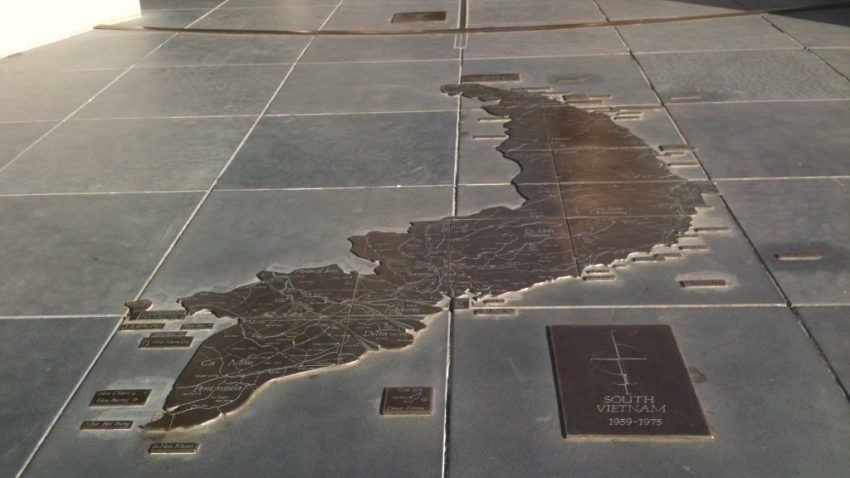
Map of South Vietnam at the entrance.
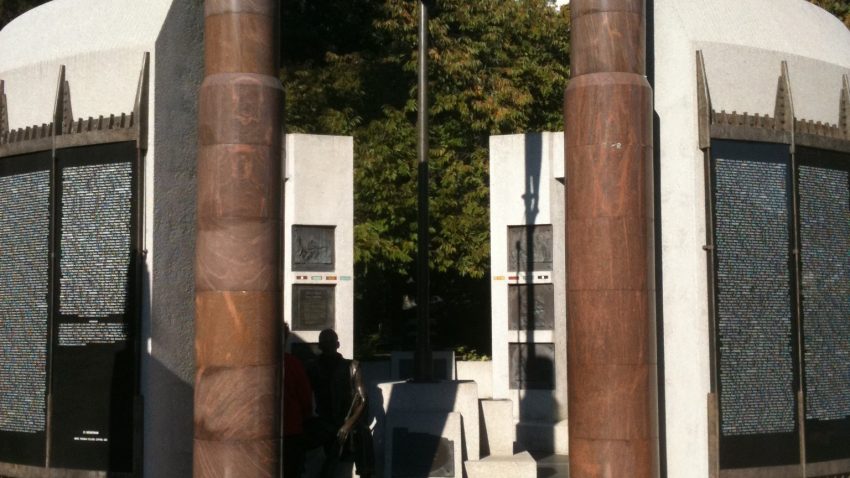
That’s a lot of names.
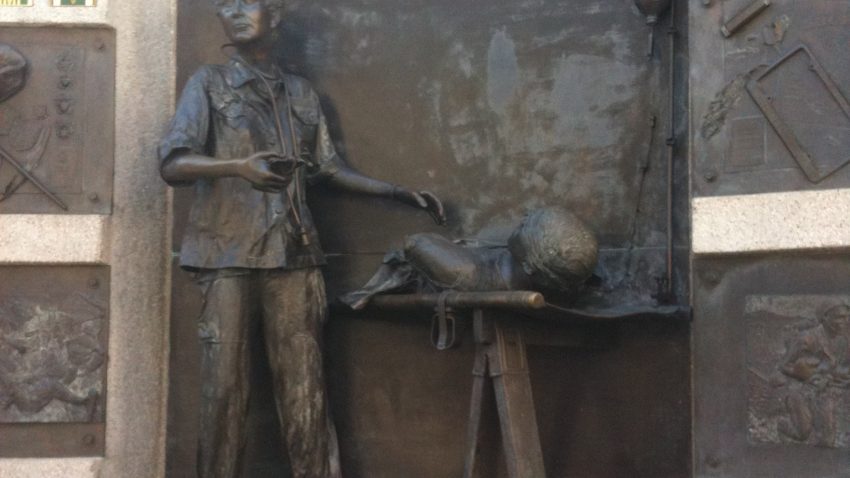
Fantastic craftsmanship for a loving memorial!
- in front of the CalPERS (California Public Employees’ Retirement System) headquarters. Mark di Suvero’s quirky contraption celebrates water and fun! Features include a spiraling shape on top, water jets, a mosaic tile pool, and even a keyboard control to move the spiral by controlling the jets. The plaque reads: “The inspiration for Serendipity comes out of di Suvero’s roots in California and his deep interest in the role of water has played in the state. The powerful spiral of this sculpture and its multiple jets of water allude to Sacramento’s complex relationship to the water sources contributing to the agricultural bounty of the Central Valley. The sculpture echoes the tree-like form at the building’s entrance, reminding us of the role CalPERS plays as provider to and protector of its members. The vivid mosaic image in the pool beneath is based on the drawing made by di Suvero that reiterates the dynamic form and gesture of the sculpture above.”
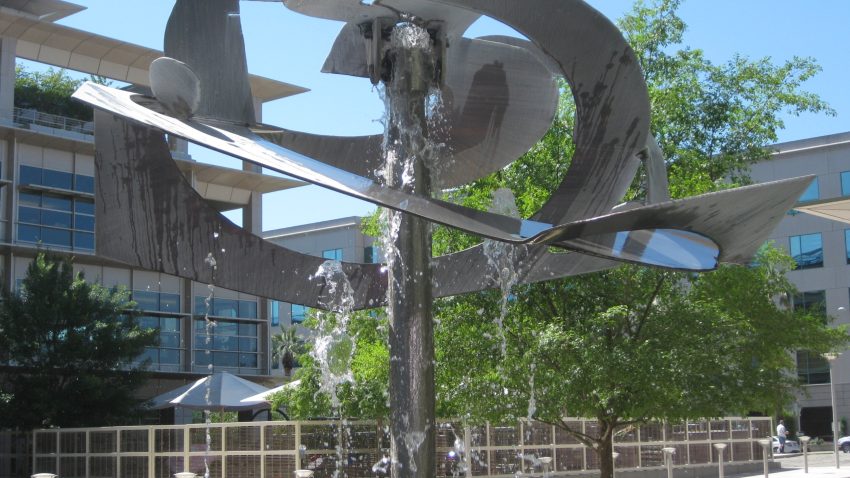
The flow of the metal captures the feel of the word “serendipity”- a good thing for the Serendipity Fountain.
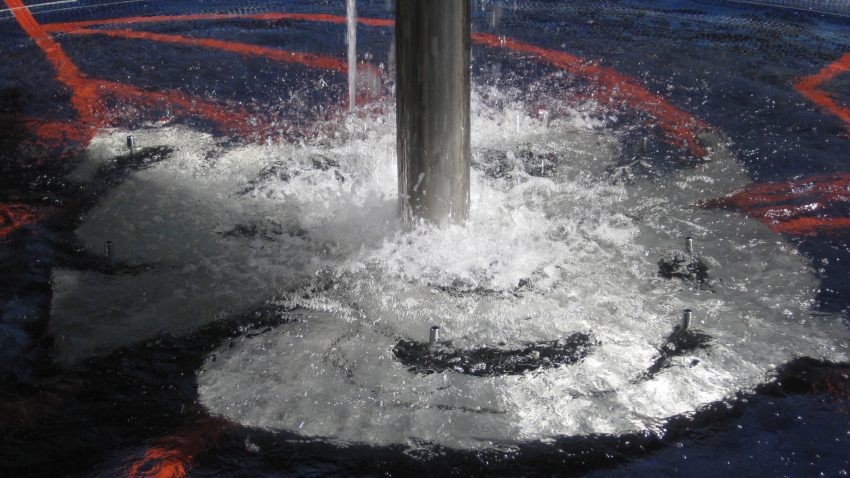
The water adds another layer to the mosaic, both literally and figuratively.
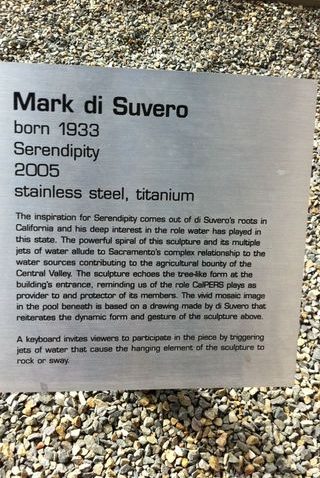
Di Suvero may have been born in 1933, but he knows how to have fun.
We’re staying with my aunt in affluent suburbs over Interim. The neighborhood’s money is mostly going to private decoration for houses, apartment complexes, and businesses. In contrast, there was plenty of art (and road work…) in midtown. Sacramento is more than its flashy parts! We saw more murals and few installations on the streets further from the city center. Midtown businesses are much more locally minded, and presumably do not have the funds or publicity for lofty projects befitting the hub of California. I noticed that most downtown public art has official titles, but midtown art often doesn’t.
I spotted murals on buildings such as:
- A beauty salon called the Spanish Fly Hair Garage (showcasing Janis Joplin, Jimi Hendrix, and Bob Dylan). Local artist Pete Bettencourt uses loose borders and a curiously unfinished look to help convey the rock spirit of these iconic musicians. California is somehwat infamous as the country’s capital of popular culture and glamorous riches, but sometimes we just want to celebrate the rawer ideals of freedom and fun.
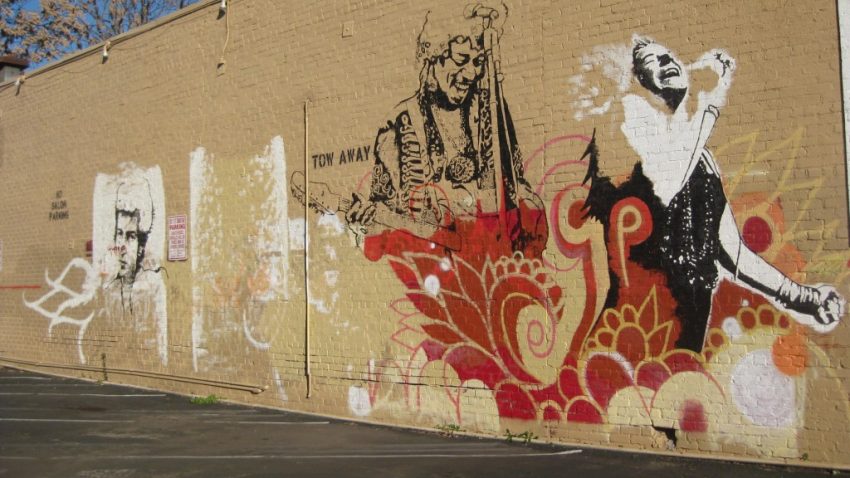
Exposed brick gives the portraits grit.
- A CED building’s alleyway wall. An all-women street artist group called Few and Far painted this mural to advocate for animal rights, beautify the neighborhood, and foster community and confidence among women artists in general.
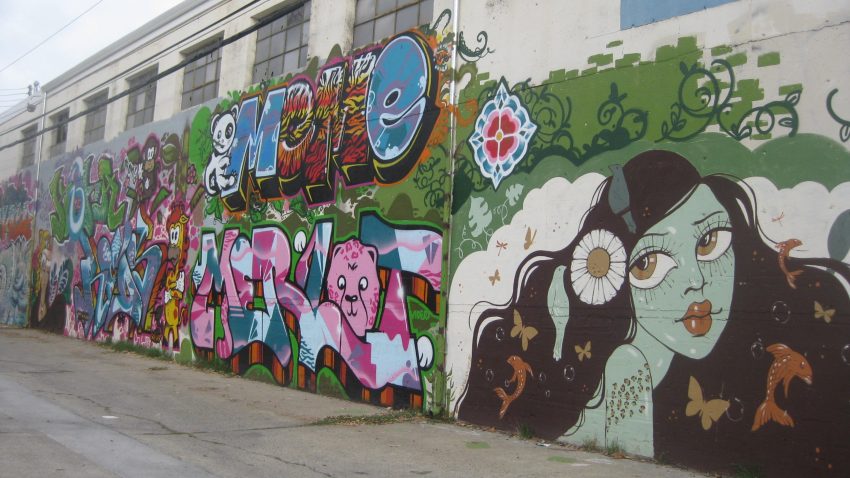
Stylization can add character to art and its messages.
- A generic office space. This proud portrait of an Indigenous American subject, from the Wide Open Walls Festival, reminds the audience of whom American land really belongs to (not by contract, but by heritage). The artist, Matt Adnate, is White, but values learning from and communing with Native American groups.
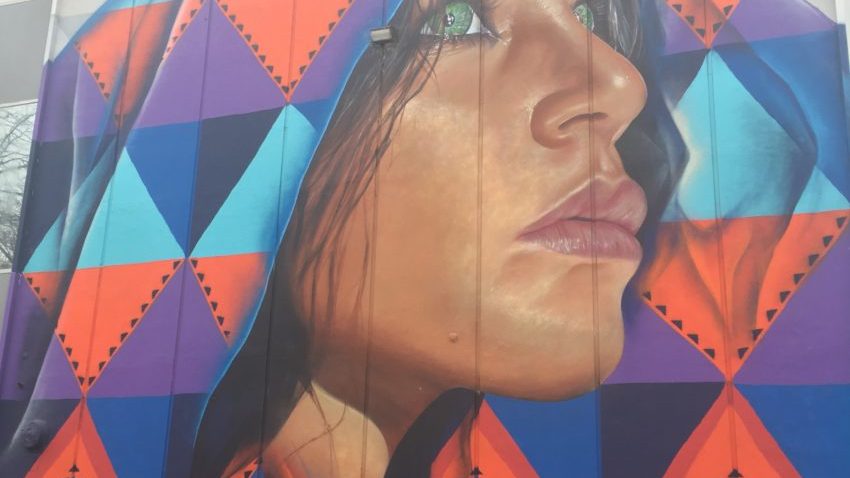
Larger than life, but reminding us of real people’s real lives.
- The California Conservation Corps main office building (CCC Mural). California is well-known for its focus on sustainable agriculture, energy, and other environmental practices. The CCC’s work, which is depicted in the mural, includes firefighting, building nature trails, and planting trees.
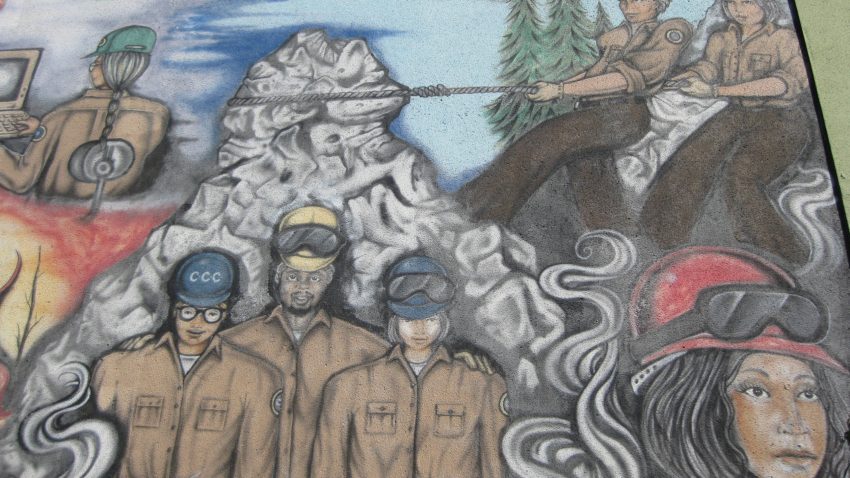
You’d think CCC stood for “California Community Center” with all the fun the mural characters are having together.
I encountered a lot of public art in urban Sacramento. I’m very pleased that my family has access to such a lively catalogue of public art, but I know that this is a privileged area and would love to see more developments throughout the country.
